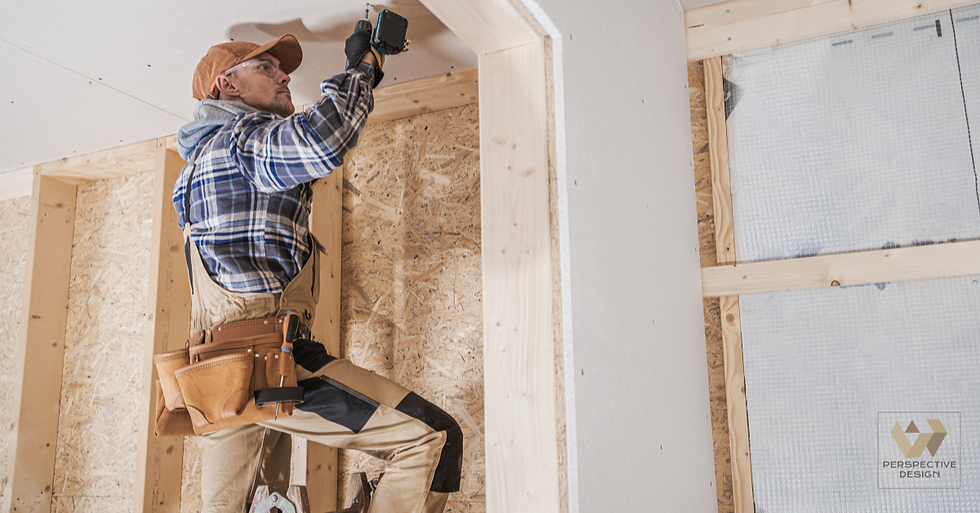Master Granite Countertop Installation Techniques
- Perspective Designs and Renovation

- Sep 5
- 4 min read
Updated: Oct 25
When you decide to upgrade your kitchen, few choices make as bold and lasting an impression as granite countertops. Their natural beauty, durability, and timeless appeal can transform your space into a stunning centerpiece. But installing granite is not just about placing a slab on your cabinets. It requires precision, care, and the right techniques to ensure your investment looks flawless and lasts for decades. I’m here to guide you through the essential steps and share practical tips that will help you master granite kitchen surface installation with confidence.
Understanding Granite Kitchen Surface Tips for a Perfect Fit
Before diving into the installation process, it’s crucial to understand the unique characteristics of granite and how they affect your kitchen surface. Granite is a natural stone, which means every slab is unique in pattern and thickness. This variability demands careful measurement and planning.
Measure Twice, Cut Once: Accurate measurements are the foundation of a successful installation. Use a laser measure or a tape measure to get precise dimensions of your countertops, including cutouts for sinks and appliances.
Account for Overhangs: Granite slabs typically have a 1 to 1.5-inch overhang beyond the cabinet edges. This not only looks elegant but also protects your cabinets from spills.
Choose the Right Edge Profile: Edges can be straight, beveled, bullnose, or ogee. Your choice affects both aesthetics and safety. For homes with children, rounded edges like bullnose are safer.
Seal the Granite: Granite is porous and can absorb liquids if not sealed properly. A high-quality sealant protects against stains and enhances the stone’s natural colors.
By paying attention to these details, you set the stage for a smooth installation and a beautiful finished product.

Step-by-Step Guide to Granite Kitchen Surface Tips Installation
Installing granite countertops might seem daunting, but breaking it down into clear steps makes the process manageable. Here’s how I approach it:
Prepare the Cabinets
Ensure your cabinets are level and sturdy. Use a level tool to check for any unevenness. If cabinets are not level, the granite slab may crack or not sit properly.
Dry Fit the Slabs
Place the granite slabs on the cabinets without adhesive to check the fit. This step helps you identify any adjustments needed before permanent installation.
Apply Adhesive
Use a high-quality, stone-appropriate adhesive or silicone caulk on the cabinet tops. Spread it evenly to avoid gaps that could cause the granite to shift.
Set the Granite
Carefully place the granite slabs onto the adhesive. Use clamps or weights to hold the slabs in place while the adhesive cures.
Join Seams
If your countertop requires multiple slabs, use epoxy resin to join seams. Color-matched epoxy blends the seams almost invisibly.
Secure the Backsplash
Attach the granite backsplash with adhesive and seal the edges with silicone to prevent water damage.
Seal the Surface
After installation, apply a granite sealer to protect the surface. Follow the manufacturer’s instructions for best results.
This methodical approach ensures your granite kitchen surface is installed securely and looks professionally done.

What to Put Under a Granite Countertop?
Supporting your granite countertop properly is essential to prevent cracks and ensure longevity. Granite is heavy, so the base must be strong and stable.
Plywood Underlayment: A 3/4-inch thick plywood sheet is commonly installed on top of cabinets before placing granite. It provides a flat, sturdy surface and helps distribute the weight evenly.
Shims for Leveling: Use shims to level the plywood if cabinets are uneven. This prevents stress points on the granite.
Support Brackets: For overhangs greater than 12 inches, install metal or wooden brackets underneath to support the extra weight.
Avoid Hollow Cabinets: Hollow or weak cabinets can cause the granite to flex and crack. Reinforce cabinets if necessary.
By preparing a solid foundation, you protect your investment and ensure your granite countertop remains flawless for years.

Tips for Maintaining Your Granite Kitchen Surface
Once your granite countertop is installed, maintaining its beauty and durability is straightforward with the right care.
Clean Daily with Mild Soap: Use a soft cloth and mild dish soap to clean spills and crumbs. Avoid harsh chemicals that can degrade the sealant.
Wipe Spills Immediately: Acidic substances like lemon juice, vinegar, or wine can etch granite if left too long.
Use Cutting Boards and Trivets: Protect your granite from scratches and heat damage by using cutting boards and trivets under hot pots.
Reseal Annually: Depending on usage, reseal your granite every 12 to 18 months to maintain its stain resistance.
Avoid Heavy Impact: Granite is durable but can chip or crack if heavy objects are dropped on it.
These simple habits keep your granite kitchen surface looking fresh and vibrant, preserving its value and appeal.
Why Professional Help Makes a Difference
While DIY projects can be rewarding, granite countertop installation is a task where professional expertise truly shines. Professionals bring:
Precision Cutting and Fitting: They use specialized tools to cut granite slabs with millimeter accuracy.
Proper Handling: Granite slabs are heavy and fragile. Experts know how to transport and maneuver them safely.
Seamless Finishing: Professionals expertly join seams and polish edges for a flawless look.
Warranty and Support: Hiring a reputable company often includes warranties and post-installation support.
If you want to ensure your kitchen remodel is flawless, consider partnering with experienced installers. For homeowners in Metro-Atlanta, I recommend checking out granite countertop installation services that specialize in custom, high-quality kitchen transformations.
Mastering granite kitchen surface tips and installation techniques empowers you to create a kitchen that’s both beautiful and functional. With careful planning, the right materials, and expert guidance, your granite countertops will be a stunning centerpiece that adds lasting value to your home. Whether you tackle the project yourself or hire professionals, these insights will help you achieve the kitchen of your dreams.




Comments